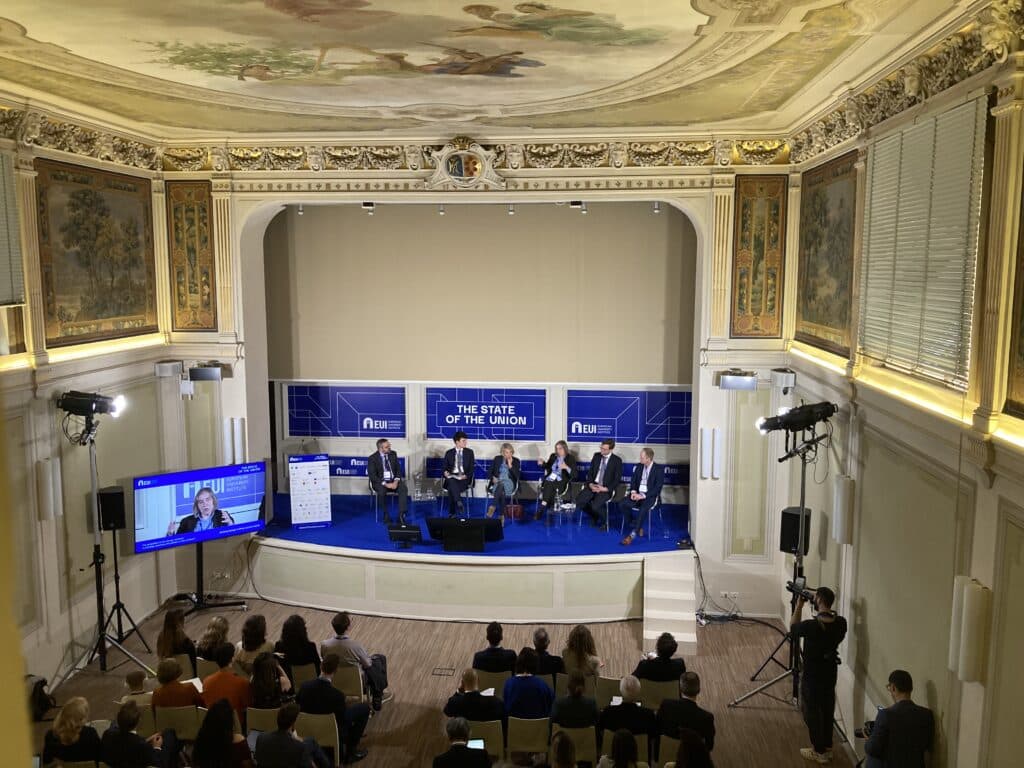Written by Lucila de Almeida
The second post on the topic of February advanced the conceptual framework of European private energy law outlined in the first post. This third post takes us one more step forward in the discussion, presenting a final set of considerations about the importance of European private energy law, this time in the context of the emerging future of energy regulation in Europe.
This third post takes our core analytical tools—the concepts of rights, remedies, and procedures—and frames them in relation to the Commission’s proposals for Europe’s energy future as laid out in its Clean Energy Package. This package proposes a Regulation[1] and a Directive[2] for Europe’s internal electricity market. The core claim that I will advance through the post is that European private energy law is about to move to center stage in Europe’s new electricity market design, assuming an importance in the future of European energy regulation beyond anything we have yet seen.
European private energy law, readers will recall, has become increasingly important in the field of EU law as the Commission’s previous trilogy of packages have come into effect. However, the Clean Energy Package takes this to a new level, expanding the private law sphere considerably—above all, placing the private enforcement at the core of future energy market governance.
The foundations of the centrality of European private energy law in the Clean Energy Package can be read, unsurprisingly, through the tripartite dimensions of European private energy law’s conceptual framework. It’s worth summarizing that in brief here before we present the discussion in more detail below:
First, of remedies, the Commission’s proposal for an electricity Regulation introduces an extensive harmonisation of strict liability. This aims to guarantee financial compensation for market participants affected by the non-compliance of other participants in coupling markets.
Second, of rights, the Clean Energy Package puts forward a set of rules governing a larger variety of types of commercial and consumer contracts, as well as modes of business associations. In so doing, it will significantly enhance contracting parties and business associations members’ awareness about their entitlements to rights enshrined in EU law within the private market relationships they have.
Third, of procedures, the Commission’s proposed new Electricity Directive expands the right to access out-of-court dispute settlement mechanisms beyond consumers, encompassing all customers of electricity within the market (i.e., intermediate participants).
Let’s unpack this in greater detail.
Of remedies: private enforcement of market operators’ duties through strict liability
Historically, in the governance of European energy markets, the locus of obligation for effective market functioning has rested with the Member States. Anyone reading the 2009 Electricity Directive and Regulation could not fail to notice that the EU legislator rigorously avoided using terms or expressions that would ‘explicitly’ extend Member States’ obligations in this regard to market participants. TSOs simply had the obligation to cooperate with each other,[3] obey the rules, and bear administrative sanctions for non-compliance under the terms of NRAs.
However, EU energy law has been expanded widely though Networks Codes, as the way in which EU secondary law addresses balancing responsibilities among TSOs, DSOs, and NEMOs directly for the market to function well. Notwithstanding the fact that Network Codes have introduced, together with duties, some provisions determining the conditions for compensation against the curtail by TSOs,[4] the Commission’s proposal for the new Regulation harmonises private remedies for compensation widely. In doing so, it bets big that European private energy law will function as a means to assure that market participants will become watchdogs of others’ non-compliance.
Like Network Codes, Article 3(1) of the Commission proposal for the new Regulation determines that Member States, NRAs, TSO, DSOs, and market operators should ensure that the electricity market operates according to a set of ‘principles’, listed in paragraphs (a) to (n). These are public policies like demand-based pricing, assurance of market benefits to customers, support for the decarbonisation of national economies, among others.
If Article 3(1) is read in isolation from the other measures, the changes coming to the European legal framework might well pass unnoticed. However, haste makes waste. While the Commission’s proposal indeed reinforces the on-going process of imposing duties on market operators like TSOs, DSOs, and NEMOs to implement, monitor and comply with EU law all at the same time, it also proposes a game change in the enforcement of these duties. It does so by harmonising private remedies.
The proposal for the new EU Regulation relies on several strict liability rules against noncompliant market operators. The Clean Energy Package put forward a broad harmonisation of strict liability remedies. If approved in its current form, the private enforcement of EU regulation will no longer depend on the recognition of remedies for compensation based only on national private law. The Regulation, therefore, constitutes the final piece that completes ‘the one view of the cathedral’[5] picture of European private energy law.
To start out by listing some of the strict liability rules, the proposal for new Regulation provides in numerous examples ranging from general to very detailed provisions on strict liability. Article 4(1) proposes that all ‘market participants’ —meaning those beyond market operators like TSO, DSOs, and NEMOs—shall be financially responsible for imbalances they cause in the system. Article 14(2) establishes that, except in case of force majeure, market participants who have been allocated capacity shall be compensated for any curtailment by TSOs, while Article 14(10) goes even further.
Article 14(10) determines that financial consequences of failure to honour the obligations associated with the allocation of capacity shall be attributed to those who are responsible for such failure. To avoid mistakes in the interpretation, Article 14(10) even gives some illustration to its means. If market participants fail to use the capacity that they have committed to using, or, in the case of explicitly auctioned capacity, fail to trade on a secondary basis, these market participants should pay a cost-reflective charge. The liability for cost-reflective charges is what one German private lawyer has called the interface liability of network externalities. The EU legislator is, therefore, proposing the harmonisation of the Germany notion of Vertragsverbund at EU level for the European energy market.[6]
Last, by anticipating the risks upon network externalities, Article 44(1) imposes on Regional Operations Centers the obligation to take necessary steps to assure the cover of liabilities through reliance on commercial insurance.
The list, though far from exhaustive, shows that the best is yet to come.
Of rights: the entitlement of rights to contractual parties and local community’ members
The horizontal direct effect of EU primary and secondary law over contractual relationships in the energy sector is not new. Early signs were seen as far back as 1994, when Almelo[7] refereed to the unlawfulness of exclusive purchase clauses between regional and local electricity distributors. Since then, the energy package trilogy has advanced a set of mandatory rules which, by ranging between more or less intrusive provisions, harmonised terms and conditions of electricity supply contracts with end-users as information duties and rights to transparent and reasonable prices. It did so for capacity reservation/allocation agreements.
The Clean Energy Package, instead, shows that the energy market design no longer accounts for traditional supply and transmission agreements only. The technological revolution(s) has allowed the emergence of new markets with novel types of transactions, and, once maturity is reached, call for a set of rules to assure the compliance of these market participants with EU public policies, rather than disruption. The Commission’s proposal for the new Electricity Directive can better illustrate what I mean with emergent markets.
The proposal for the new Electricity Directive will address rights to contractual parties or members of different types of transactions or associations in emergent markets. The former could be service contracts between final customers in the demand-side and new service providers in the supply-side; or those new service providers on the demand side and DSOs or NEMOs on the supply side. Notwithstanding an attempt to perceive parties through concepts of supply and demand, even those common distinctions of contractual parties in transactions could blur in line of the concept of an active customer, which Article 15(1) defines as ‘final customers entitled to generate, store, consumer, and sell self-generated electricity’ and has been referred to as a ‘prosumer’. It is possible certain consumer rights – like rights to switch without switching related-fee in Article 12(2) and rights to transparent prices – will have to be reassessed in a context-based approach.
To assure that these emerging market participants will behave in conformity to EU values, i.e. non-discrimination of market participants in an integrated, competitive, security and decarbonized markets, the new electricity Directive will set rules by addressing specific rights and duties to specific contracts and contractual parties. Between final customers – active or not – and service providers, the latter could be final aggregators, demand response providers, data management companies, smart meters providers, local energy community, and last – but not least – operators of recharging points of electric cars. This justifies why the Commission’s proposal set the rules by bringing about a taxonomy to distinguish the various types of contracts and transactions ahead.
If the new Directive proposes a set of rules to regulate transactions, a close look at these rules uncovers the long list of duties and rights that will be associated with those contractual parties. The following examples provide an illustration. Article 13(1) states that final customers and final aggregator have the rights to establish a contract even with no electricity suppliers’ consent. Article 17(1) sets the right to non-discriminatory treatment of aggregators in organised markets; while Article 17(3) ensures that each aggregator enters the market without obtaining prior consent from others. Article 24(4) prohibits the charging of final customers to access their data, as much as Article 24(1) reinforces the ‘explicit consent’ of final costumers to the validity of data management agreements. Last, Article 16(2)(b) grants the maintenance of the rights to householders, even when those are members or shareholders of local communities.
Regarding whether the rights of householders that are consumers/generators/shareholders of local community, all at the same time, will conflict with the strict liability imposed to all market participants for imbalances, these are questions that will need to be answered shortly. To do so, the conceptual framework of European private energy law provides a starting point.
Of procedures: the enlargement of access to Ombudsmen for ‘customers’
Notwithstanding the new set of rules enshrining rights for non-discriminatory and fair treatment, or remedies for strict liability, the Clean Energy Package also advances innovation concerning procedures.
The Commission’s new draft Electricity Directive proposes, in Article 26, a slight review of the provision establishing rights to access out-of court dispute resolution. Though subtle, this would be ground changing. It does so through switching the addressee of those rights as ‘consumers’ to ‘customers’. ‘Customers’ being defined as any wholesale or final customer of electricity, the new Directive proposes to ensure alternative modes of dispute resolution to any agreement supplying or purchasing power.
Irrespective of whether customers are householders having service provided by large retailers, or large retailers purchasing electricity in organised markets from an anonymous supplier or a small renewable generator, those customers will have rights to equal access to Ombudsmen. As a result, the role of Ombudsmen as platforms to facilitate the enforcement of consumer for the protection of the weakest party will no longer be unquestionable. Ombudsmen’s customers will no longer be the most vulnerable party in a two-sided legal dispute.
To conclude, the last post of the topic of February shows the importance of European private energy law will assume in the coming years. It is also a call for lawyers to think of EU energy law in a different way.
The Clean Energy Package should be perceived as a call for market participants to be active in enforcing their rights. If the Commission is pushing forward rights for financial compensation, it is doing so by relying on market participants—householders, wholesale customers, traders, brokers, final aggregators, power exchanges and on—as instruments to enforce EU law for the effective functioning of the market. Whether the consequences of having a massive private enforcement of EU law before Courts or Ombudsmen will be positive or negative, will only be known if market participants are fully aware of its functions. European private energy law has become, to coin a phrase, a thing.
[1] COM(2016) 861 final/2, The European Commission Proposal for a Regulation of the European Parliament and of the Council on the internal market for electricity.
[2] COM(2016) 864 final/2, The European Commission Proposal for a Directive of the European Parliament and of the Council on the common rules for the internal market in electricity.
[3] For instance Article 4(1) and 12(1) of the Regulation (EC) No 714/2009 of the European Parliament and of the Council of 13 July 2009 on conditions for access to the network for cross-border exchanges in electricity and repealing Regulation (EC) No 1228/2003.
[4] Article 72(3) of the Commission Regulation (EU) 2015/1222 of 24 July 2015 establishing a guideline on capacity allocation and congestion management.
[5] Calabresi, Guido, and A. Douglas Melamed. 2004. “Property Rules, Liability Rules, and Inalienability: One View of the Cathedral.” In Economic Analysis of the Law, edited by Donald A. Wittman, 19–33. Blackwell Publishing Ltd.
[6] Teubner, Gunther, “Coincidentia oppositorum: Hybrid Networks Beyond Contract and Organization”. In Storrs Lectures 2003/04 Yale Law School. In: Robert Gordon and Mort Horwitz (eds.), Festschrift in Honour of Lawrence Friedman. Stanford University Press 2006.
[7] C-393/92, Municipality of Almelo and others v NV Energiebedrijf Ijsselmij [1994]






